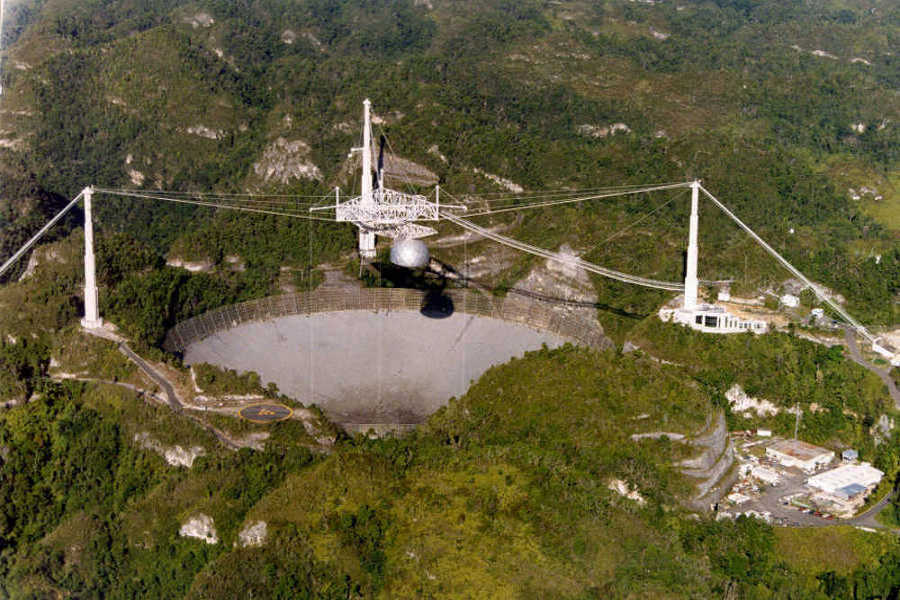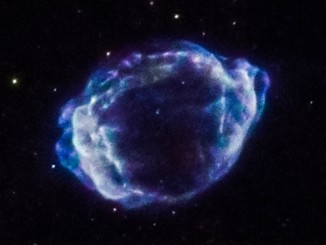
Two months after escaping the destruction brought to Puerto Rico by Hurricane Maria, the famed Arecibo Observatory will get a new lease on life as the National Science Foundation seeks funding partners to keep the radio telescope aimed at the cosmos.
The NSF announced the decision Thursday, and astronomers enthusiastically welcomed the news.
“This important step concludes the agency’s decision-making process with respect to the general path forward for facility operations in a budget-constrained environment, and provides the basis for a future decision regarding a new collaborator,” the NSF said in a statement.
Faced with a dwindling budget for the telescope, the NSF has sought to transfer control of the Arecibo Observatory to a university or third party institution. The divestment options also included demolition of the observatory, drawing the ire of scientists who use the facility nestled in a natural depression near the town of Arecibo, Puerto Rico.
The NSF’s multi-year review on the future of Arecibo included an environmental analysis and input from multiple public and scientific committees.
“The decision formalizes the selection of NSF’s preferred alternative: to collaborate with interested parties to maintain science-focused operations at the observatory with reduced agency funding,” the agency said in a statement. “This plan will allow important research to continue while accommodating the agency’s budgetary constraints and its core mission to support cutting-edge science and education.
Researchers responded to the decision positively.
Thomas Zurbuchen, head of NASA’s science directorate, said Arecibo’s continued observations “great news” for the space agency’s research in near-Earth objects.
The @NSF decision on @NAICobservatory is great news for @NASA Science, especially for the analysis of Near-Earth Objects. https://t.co/0ai1zNuWbl
— Thomas Zurbuchen (@Dr_ThomasZ) November 16, 2017
“Still alive. Still doing science,” tweeted Robert Minchin, group lead for radio astronomy at Arecibo.
A consortium of institutions — SRI International, the Universities Space Research Association, and the Universidad Metropolitana and the University of Puerto Rico — currently runs the observatory.
“We are pleased that the National Science Foundation has formalized its preferred decision regarding the future of Arecibo Observatory, which will enable the observatory to continue its important service to the scientific community,” USRA said in a statement.
Arecibo Observatory is the second-largest radio telescope in the world. Constructed in the early 1960s, its main dish reflector spans 305 metres (1,000 feet).
The facility suffered minor damage when Hurricane Maria struck Puerto Rico on Sept. 20. Strong winds blew away a secondary antenna suspended on catenary wires above the telescope’s iconic dish, and the storm knocked out electricity and communications links to the observatory.
But workers sheltered at the observatory were unharmed, and some scientific observations at Arecibo have resumed.
“NSF remains deeply concerned about the impacts from recent hurricanes on Arecibo Observatory staff, the facility, and all citizens of Puerto Rico,” the agency said. “The (decision) arrives at a challenging time, but is necessary for the agency to secure a future for the observatory, as it will allow negotiations to begin with potential collaborators who may take over management and operations as NSF funding is reduced.”
The NSF said it wants to fund repairs of Arecibo Observatory to restore it to its condition before Hurricane Maria — “if feasible.”
Astronomers use Arecibo to investigate asteroids, planets, pulsars, galaxies and dark matter. The giant radio telescope has also sent signals into the Universe to probe for extraterrestrial life, and listened for signs of transmissions coming from other worlds.
One recent target of Arecibo was the triple asteroid Florence, which passed more than 4 million miles (7 million kilometres) from Earth on Sept. 1. Arecibo and other radars detected asteroid Florence had two unexpected companions, or moons.
Arecibo is also famous for its use as a location in films, such as Contact and GoldenEye.
Email the author.
Follow Stephen Clark on Twitter: @StephenClark1.



